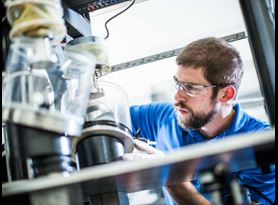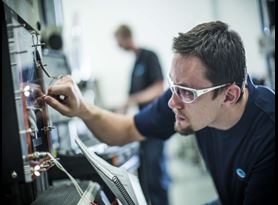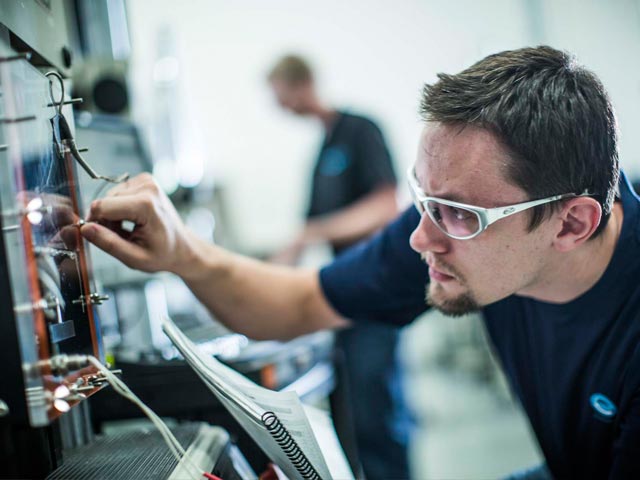5 Recommendations for Improving your ASTM F382 Test Results
There are many steps medical device manufacturers can take early on to prepare for a successful testing program. In this article, we review five recommendations for performing ASTM F382, all of which may be applied to any mechanical test program.
ASTM F382 –Standard Specification and Test Method for Metallic Bone Plates1 seems very straight forward, but there are specific guidelines the user must follow to maintain test validity. The following recommendations focus on bone plate testing within the medical device industry.
1. Know the standard
Become familiar with the test standard to perform the test accurately. It is common to think, “It’s just a four-point bend test” or “anyone can just read a standard,” but to understand how to carry out a successful mechanical test, you need to know what to look for before the test is run. The user should be aware of artifacts that may influence the outcome of a test. For example, how much deflection is expected, and are the roller heights set adequately to prevent bottoming out on either the roller supports or base of the fixture? If the plate has different-sized holes, unique geometries, or is not symmetric, will it migrate or fail when applying static and fatigue loads?
Note: remember to review the latest revision of the standard.
2. Plan your samples
The most common issue our experts run into with samples is that the bone plates are not long enough to test. ASTM F382 “strongly recommends” obtaining test specimens with a sufficient length to align to the standard. Parts are often ordered before reviewing the testing requirements, only to then result in a deviation from the standard and a more difficult or variable test setup.
3. Perfect the test setup
Your test setup will undoubtedly have an impact on your mechanical testing results. For ASTM F382 testing, the orientation of the bone plate will have a direct effect on the strength of the part in a four-point bend scenario. The concave surface of the bone plate which will come into contact with the bone (during surgery), should face upward in testing toward the load rollers. The convex surface, where accompanying bone screws will be inserted, should face downward, towards the support rollers. Abnormally shaped bone plates are more difficult to set up and test. Following the standard as closely as possible is important when dealing with irregular geometries, and ASTM F382 provides some extension guidelines for this case.
Rigid, 3D printed extensions can be used for complex geometries to align the specimens and create flat contact points on the rollers. However, it is important to pay attention to the configuration and how you will be comparing the data. Providing justifications can be difficult if you aren’t paying attention at the beginning. Roller dimensions are another important factor. ASTM F382 suggests using rollers of equal diameters within the range of 6 to 12 mm. Although this is the preferred method, there are times when smaller diameters are needed, especially when dealing with sub-size bone plates.
4. Know when to deviate, and when not to
While staying as close to the standard as possible is preferred, it may not always be feasible. There are occasions when the test must deviate from the specification to successfully carry out the experiment, particularly with unique geometries like foot and ankle plates. Even when deviating, make sure that your protocols are following the procedures in the specification and highlighting any specific changes. Showing that you understand the specification and justifying the deviation is critical to avoiding issues or questions during the submission process.
5. Check your units
There are many formulas in ASTM F382 that need to be considered, and it is common to see mistakes made in the calculations or the units not being tracked all the way through. Your predicate comparison will be much easier if you pay attention to the right scales and units. Testing is commonly performed in force units (N) and then converted and reported in moment (Nm). Continuity through the remaining calculation is important as millimeters and meters are very different. Another common pitfall is to mix up the center span or the loading distances if different values are used. Missing a unit or decimal point could result in a difficult comparison to predicate data.
Conclusion
Following these simple recommendations for testing, according to ASTM F382, helps ensure a smooth submission and saves time and money by preventing justifications or having to order new parts. Element routinely performs ASTM F382 static and fatigue testing for the medical device industry.
If you have questions regarding your bone plate testing program or would like to request a quote, contact us today.
Reference
ASTM F382-17, Standard Specification and Test Method for Metallic Bone Plates, ASTM International, West Conshohocken, PA, 2017, www.astm.org
Access the active standard here.
Find related Resources
Related Services

Medical Device Testing
As a comprehensive testing partner, you’ll enjoy the benefit of a single supplier source for all of your testing needs, from mechanical testing and environmental simulation to EMC and wireless device testing.

Bone Plate Bone Screw and Fixation Device
We provide mechanical testing for bone plates, screws and fixation devices to ensure they function safely when needed most.

Test Protocol for Medical Devices
A protocol and plan will mitigate your risk, prevent confusion, set clear expectations, and preserve the necessary information for future reference and use.
Sign Up for Free Resources
Visit Element's email subscription center to receive the latest industry news, technical whitepapers, case studies, webinars, and upcoming events.
